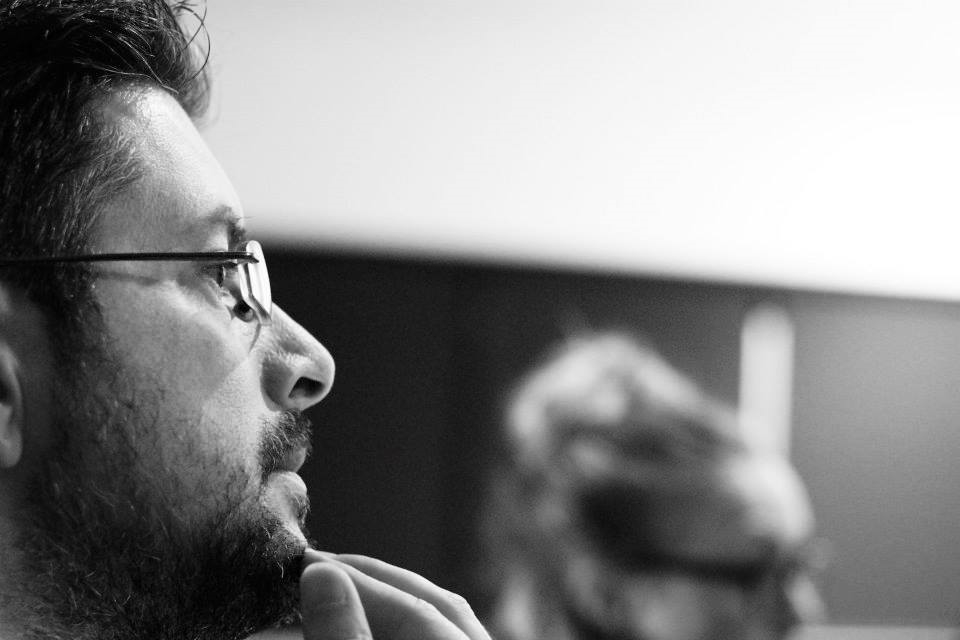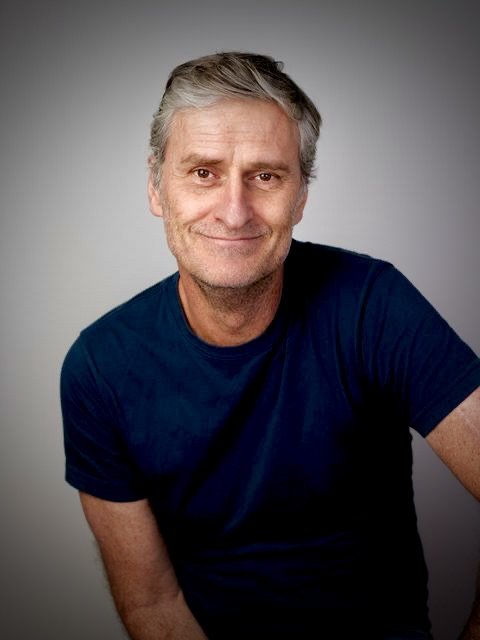
About Me
Allow me to share a glimpse into my artistic journey—a path shaped by passion, struggles with neurodivergence, and an unwavering commitment to authentic performance—through the evolution of the WHY Method, Story & Character Synthesis and The Travis Technique.
Struggling with Traditional Acting Methods
For most of my life, I thought I was the problem. Acting was my passion, my obsession, the thing that set my soul alight—and yet, every time I stepped into a rehearsal room or workshop, I felt like I didn’t belong.
I was told I needed to break down a script, analyse objectives, beats, super-objectives. But no matter how hard I tried, the words on the page just wouldn’t stick. I struggled to learn my lines in isolation, to force an emotional connection through cold analysis, to fit into a process that felt unnatural. And because I struggled, I believed I was failing. For thirty years, I convinced myself that I simply wasn’t working hard enough—that if I could just focus more, push harder, be like everyone else, I would finally get it.
But deep down, I knew there had to be another way.
Understanding My Neurodivergence
What I didn’t realise at the time was that I was trying to force my neurodivergent brain to function in a way it wasn’t designed to. I had spent years struggling with traditional methods, trying to start with what—what I was doing, what I was saying—then figuring out how to do it, when my brain had always intrinsically started with why. Reading Start with Why by Simon Sinek was a moment of profound recognition. It wasn’t teaching me something new—it was confirming what I had always known deep down. My ADHD had always pushed me to seek deeper meaning first, yet I had spent years trying to suppress that instinct, believing I needed to approach acting in a more structured, surface-level way. The reason I struggled for so long wasn’t because I lacked discipline or ability—it was because I was being forced into a framework that worked against how my mind naturally processes creativity.
The Dangers of Emotional Self-Extraction
At one point, I played a character who suffered from severe depression in multiple performances. Following the traditional approach, I was encouraged to distort my own personal truth, extracting emotions from my life and compounding them onto the character’s experience. The result? My mental health spiralled, and it took two months to recuperate after the performance ended. I was told that it’s just post-show blues.
This is the danger of emotional self-extraction—it has a different name for each acting technique but essentially it is the process of aligning an actor’s personal trauma with the character’s trauma in order to evoke empathy. But for actors who are already highly empathetic, this doesn’t just deepen the performance—it overloads them. These exercises pile personal trauma on top of an already heightened emotional state, which can cause psychological harm and potentially risking retraumatisation.
I almost quit. I was ready to walk away entirely. And then, everything changed…
Mark W. Travis
Discovering the Travis Technique
I was invited to attend a 7-day intensive directing masterclass as an actor with Mark Travis, one of the world’s leading authorities on intuitive directing. I, along with a dozen other actors, were there for the directors to practice the Travis Technique on. I sat at the back, still believing I didn’t belong there. And then Mark said something to the directors that shook me to my core:
“So you think you’ve analysed your script? I guarantee you, you’re not even close!”
He wasn’t talking about objectives or beats. He was talking about intuition over cognitive reasoning—about allowing the character’s subconscious to shape the story, rather than the director’s mind imposing control over it. This was a complete radical shift from the structured methods I had been conditioned to follow. And for the first time, I felt seen.
On day one, Mark recognised something in me that I had known all along but had never been able to articulate. He leaned toward me at the back of the room and said, "You already know this don't you?" and with all of the weight of years of struggle, I replied with a resounding "YES!"
In a single session, Mark, utilising his interrogation process I was able to transform into the character—fully, instinctively—without breaking the scene down into intellectualised parts. I wasn’t thinking, I was simply existing in the role, my conscious self was fully surrendering to the character. A character so vicious, aggressive and full of rage, reaching a level emotion and causing everyone in the room to shift in their seats. Mark sensing the concern, calmly ended the scene and then utter silence, to everyone’s surprise there was no need for me to craft out, I simply uttered “that was amazing!”. The reaction from one of NZ's prominent directors? “I didn’t know you could do that.”
From that moment, I stopped trying to prove myself and started owning my process.
The Science Behind the Method
I became obsessed with understanding why this worked—why my instincts had rejected traditional acting methods, why surrendering to curiosity, wonder, and subconscious absorption led to deeper, more authentic performances. I studied Whole Brain Thinking by Dr Jill Bolte Taylor, Carl Jung’s persona theory, Todd Herman’s The Alter Ego Effect, the psychology of deep learning, and how the subconscious shapes creativity. I trained directly with Mark Travis, becoming part of his team, learning how to extract the character from within the actor, rather than forcing the actor to impose themselves onto the character.
Expanding My Knowledge and Training
Additionally, I have undertaken online training in body language with Vanessa Van Edwards and studied Neuro-Linguistic Programming (NLP) workshops, further deepening my understanding of how human behaviour, subconscious communication, and psychological patterns influence performance. Unlike traditional acting techniques that often emphasise a single learning style, my method incorporates all seven learning styles, ensuring that every actor—regardless of how they process information—has access to a method that works with their natural strengths rather than against them.
Joining The Travis International Film Institute Team
My deep understanding of the Travis Technique led to an invitation to join the Travis International Film Institute (TIFI) Team (TIFI Team). Mark Travis recognised not only my ability to embody his method but also my skill in articulating why it works at a profound level. Being part of the Travis International Film Institute is both an incredible privilege and an inspiring experience. Working alongside internationally acclaimed, award-winning directors and filmmakers, I have the opportunity to contribute to a team that is redefining the way actors and directors connect with storytelling. The depth of knowledge, creativity, and passion within this team continues to challenge and elevate my work, reinforcing the importance of instinct-driven, emotionally authentic performances.
Peter Feeney
My Experience with The Actor’s Lab
Shortly after developing my approach, I was invited by Peter Feeney to speak at The Actor’s Lab, where I was asked to share my insights with neurodivergent students who were struggling with the same issues I had faced. What started as a simple conversation about tips and tricks for managing ADHD and dyslexia in acting quickly evolved into something bigger.
I asked the students a simple question: Why did you enter the performing arts? That question lit a spark. By reconnecting with their intrinsic motivation, they immediately became more engaged, more present. I encouraged them to read scripts from a place of curiosity rather than analysis, to explore a line not by intellectualising it, but by surrendering to the given circumstances and engaging with their scene partners in the moment.
Something clicked. Even the neurotypical students found it revelatory—one even called it “the cheat code of acting” because their performance felt effortless and organic. What started as a guest session turned into something more permanent. I was asked to stay on as one of the main teachers at The Actor’s Lab, helping actors—both neurodivergent and neurotypical—experience the power of working from their subconscious synthesis rather than cognitive analysis.
How I can help
If you’ve sat in acting classes feeling like you just don’t get it—if you’ve second-guessed yourself, masked, overcompensated, or gaslit yourself into believing you’re the problem—I want you to know you’re not alone. More importantly, you were never the problem.
Your brain simply works differently. And that difference? It’s not a weakness—it’s your greatest strength.
I offer one-on-one coaching and run acting classes at Studio Four at TAPAC in Auckland, where I guide actors to connect with their roles in a way that feels natural, effortless, and alive—without forcing emotional self-extraction or relying on rigid techniques that don’t serve them.
If you’ve ever felt like the industry wasn’t built for you, I’m here to tell you: The method was the problem, not you.
There’s a better way. And I’d love to help you discover it.
Simply fill out the form, come join us, and see if this masterclass is the right fit for you.
Who knows? You might even find your tribe.
With love,
Carl Drake
“Those who know, do. Those who understand, teach.”
“When we know WHY we do what we do, everything falls into place.
When we don’t, we have to push things into place.”






